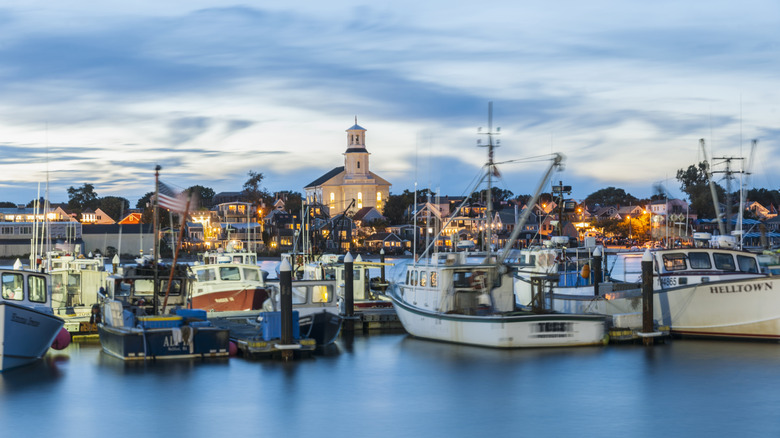
The Forgotten Transcontinental Highway: Route 6
While Route 66 may be the more famous cross-country highway, there is another lesser-known route that runs almost parallel, connecting the East and West Coasts. Known as Route 6, this highway begins in Provincetown, Massachusetts, one of the most picturesque towns on the East Coast, and winds through 14 U.S. states before ending in California. Though not as well-known as Route 66, Route 6 offers a unique journey through diverse landscapes and historic sites.
Route 6 was part of the original 1925 proposal for a numbered highway system crisscrossing the country. It was initially considered the longest transcontinental highway, sharing the title with U.S. Route 20 at various times. However, unlike Route 66, which gained popularity thanks to the catchy lyrics of Bobby Troupe's song, Route 6 never achieved the same level of fame. Despite its historical significance, Route 6 remains largely unknown, except for certain sections where it has become an attraction or a well-traveled local roadway.
The journey along Route 6 starts in Provincetown, Massachusetts, and continues through New Bedford and Fall River before crossing into Rhode Island, Connecticut, New York, and Pennsylvania. The Cape Cod portion of the original roadway, known today as Route 6A, is a scenic byway that takes travelers through picture-perfect New England villages and past historic homes dating back to the colonial era. Along the way, side roads lead to pristine bayside beaches and unmarked pull-overs offer access to walking trails through salt water marshes.
By the time you reach the Cape Cod Canal in Bourne, Massachusetts, you've only traveled the first 65 miles of what is now a 3,000-plus-mile-long transcontinental roadway. The actual length of Route 6 is a point of debate, as it has changed over time due to updates in highway numbering systems. Originally stretching from Long Beach, California, to Provincetown, Massachusetts, Route 6's official length was reduced to 3,227 miles when California introduced a new highway numbering system in 1964.
Despite its winding and sometimes indirect path, Route 6 offers a unique cross-section of the American landscape. From historic villages and coastal towns to arid deserts and rugged mountains, the journey covers a vast range of environments. Some communities along the route have faded into obscurity, while others have embraced their role in Americana.
Highlights Along the Route
From the start in Provincetown, the journey continues through southeastern Massachusetts and into Rhode Island, where highlights include Roger Williams Park Zoo in Providence. The AZA-accredited zoo opened in 1872 and is a great stop for families. In North Scituate, Cindy's Diner is a local favorite known for its Yankee Pot Roast. As the route moves into Connecticut, travelers can visit Goodwin State Forest in Hampton, a prime spot for leaf-peeping during foliage season.
In New York, the landscape shifts to rolling hills and small towns, with Peekskill on the banks of the Hudson River offering a chance to grab a bite and explore local shops and galleries. Pennsylvania is the only state actively promoting Route 6, with suggested itineraries including a 10-day, 427-mile road trip. Cleveland on the shores of Lake Erie and rural communities with long stretches of farmland are highlights in the Buckeye State.
In Indiana, Route 6 winds through bucolic landscapes and agricultural farms, with the Mid-America Windmill Museum in Kendallville being a must-see. In Illinois, Downtown Morris on the banks of the Illinois River is home to antique stores and specialty shops. Iowa's Route 6 claims to fame includes Wilton Candy Kitchen, the oldest continuously operating ice cream parlor in the world.
Nebraska's Ashland is an artsy community once a major crossroads for the Ox-Bow Trail. In Colorado, a 19-mile stretch between Golden and Idaho Springs traverses Clear Creek Canyon before crossing the Continental Divide at Loveland Pass. Grand Junction, known for its variety of restaurants, is worth a stop. In Utah, the fossil bed at Cleveland-Lloyd Dinosaur Quarry is a dream come true for aspiring paleontologists.
Planning Your Journey
Driving Route 6 non-stop end-to-end would take about 65 hours, but a more enjoyable experience requires planning. A six-week trip allows for a comfortable pace with plenty of time to explore sites of interest and enjoy last-minute detours. Spontaneity is key, as the late chef Anthony Bourdain often emphasized. However, some pre-planning is essential, including purchasing a National Geographic Road Atlas and downloading maps for offline viewing.
GPS can be unreliable in remote areas, so having a backup plan is crucial. Bringing a bike or in-line skates can provide regular breaks and enhance mood and alertness. For those planning to visit national parks, a U.S. Park Pass grants entry to all vehicles. Lastly, be mindful of varying traffic rules across states to avoid unexpected tickets.
Route 6 offers a unique journey through the heart of America, showcasing its diverse landscapes and rich history. While it may not be as famous as Route 66, it provides an unforgettable travel experience for those willing to explore its hidden gems.
